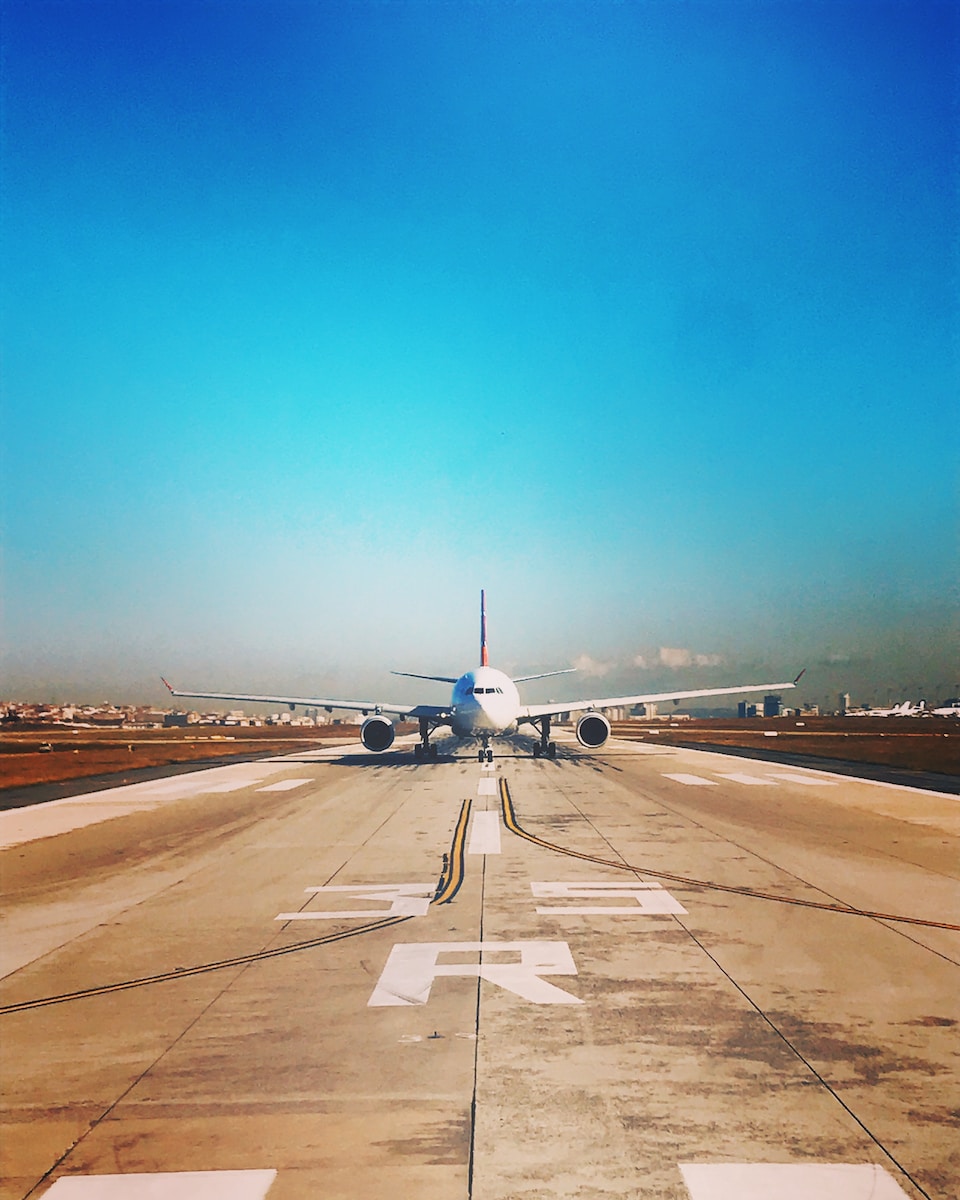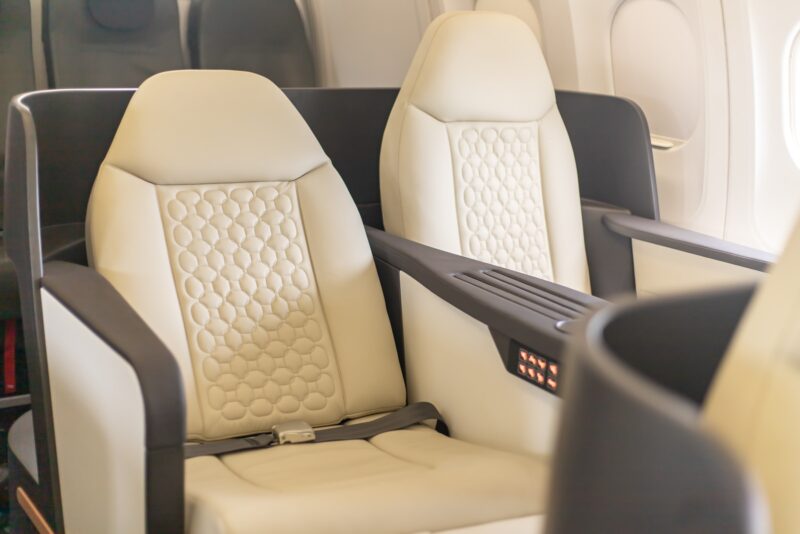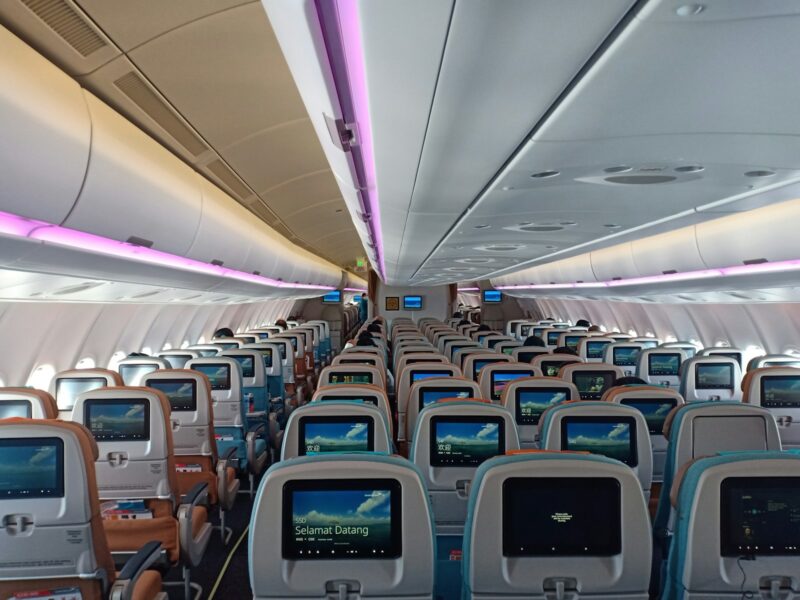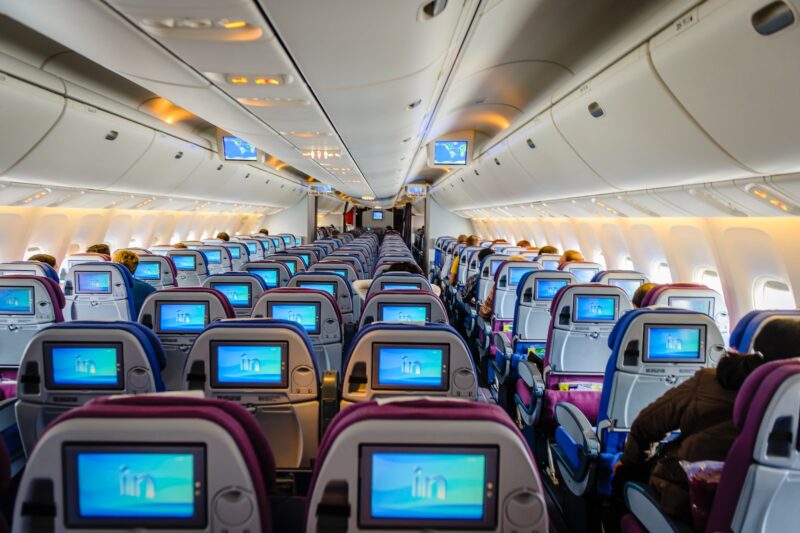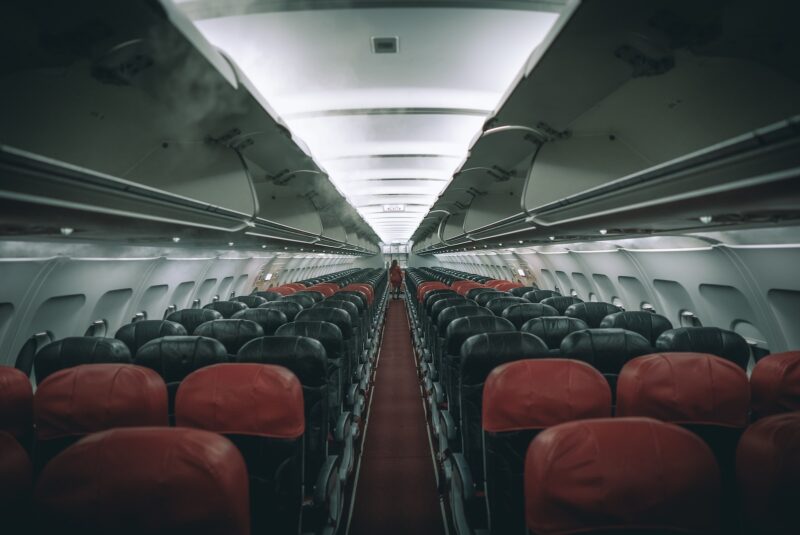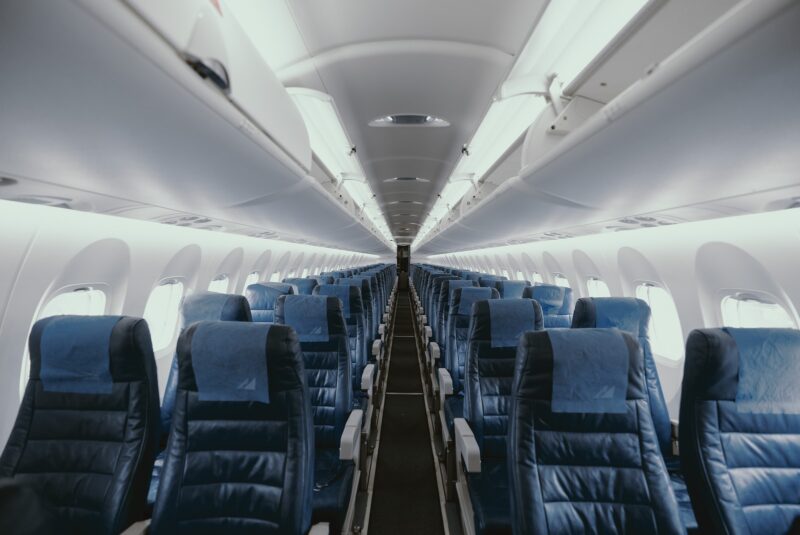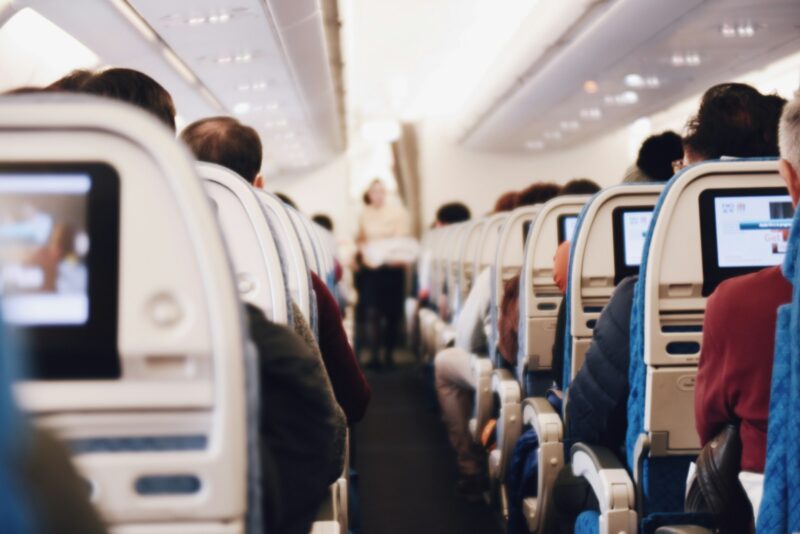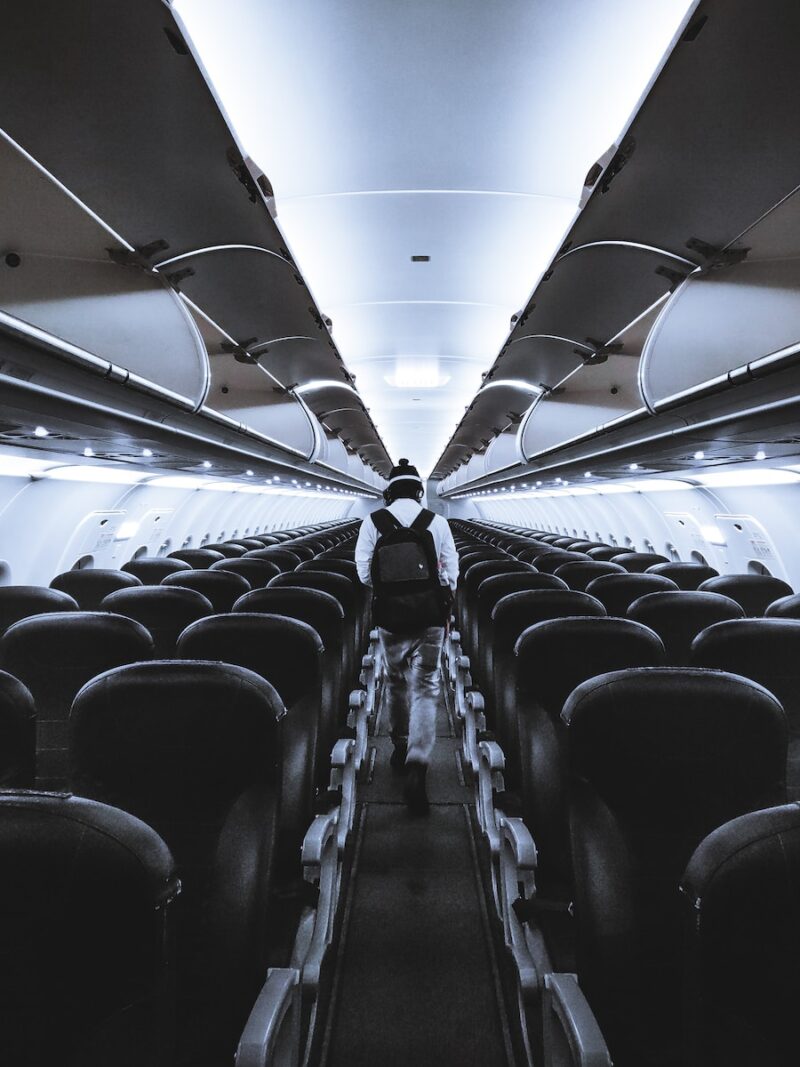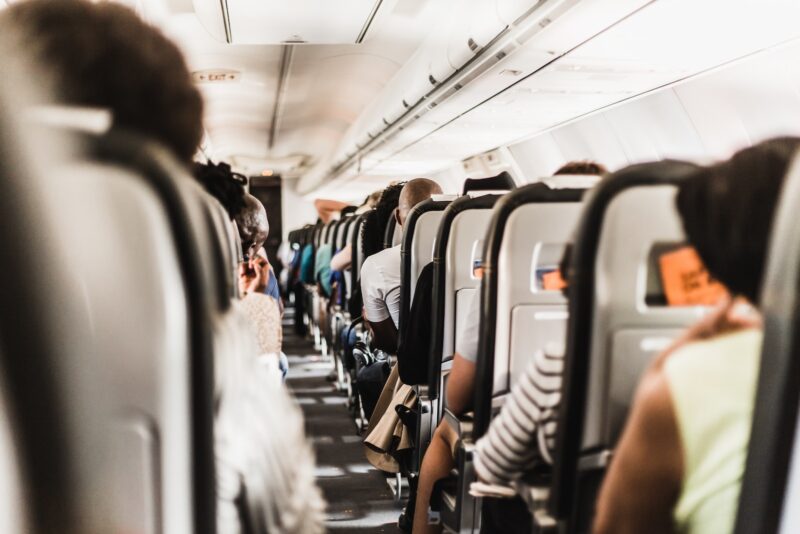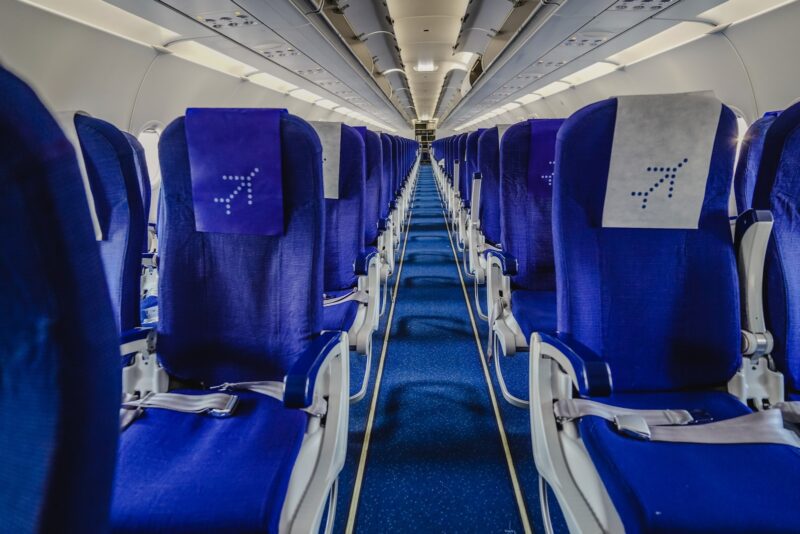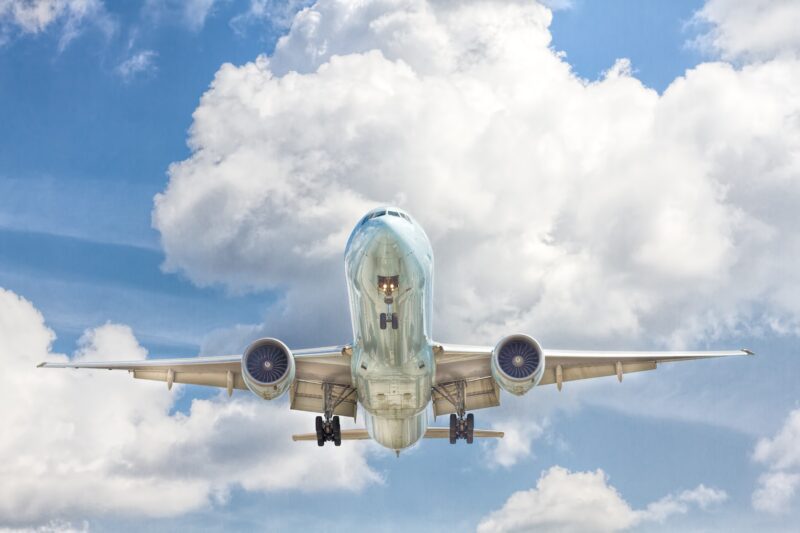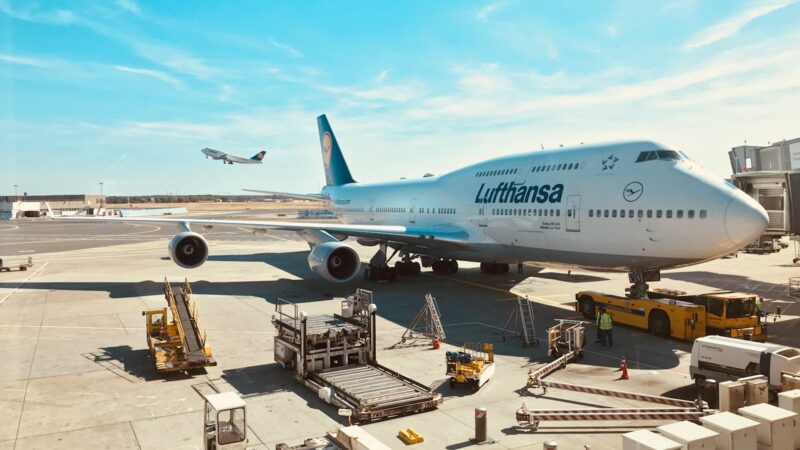Table of Contents
ToggleBook the Best Airplane Seat: Overview
If you are able to successfully book the best airplane seat, you can significantly enhance your flying experience, transforming it from a trial of patience into a journey of comfort. From the bustling streets of New York to the serene shores of Hawaii, savvy travelers know the importance of selecting their spot on the plane with care. This practical travel advice will help you book the best airplane seat and avoid common pitfalls such as seats with limited recline, a proximity to close to or to far from the lavatories, or the often unavoidable and cramped middle seat.
For both frequent flyers and occasional adventurers, understanding the nuances of airplane seating charts paves the way for you to book the best airplane seat. They recognize the value in investing a bit of effort prior to their trip to ensure their seating choice aligns with their travel needs, whether it’s for uninterrupted work time or simply to enjoy personal space before reaching their destination. Armed with the right strategies, any traveler can claim their seat confidently, turning a routine flight into a tailored travel experience.
Click here to learn which airlines are the most comfortable overall
Understand Your Seat Preferences
Choosing the best airplane seat on a flight hinges on the individual needs of travelers and the nature of the journey. Personal comfort and convenience are central to this decision-making process.
Considerations for Seat Selection:
- Width of the seat matters. Those needing additional space, including larger passengers or those with young children, might look for broader seating options.
- Not all seats come with a window. Travelers who enjoy the view or feel claustrophobic might want to avoid such seats.
- Legroom varies. Seats offering extra space can significantly enhance comfort, especially on long-haul flights.
- Reclining features differ. Certain seats offer limited or no reclining, impacting the capacity to relax.
- Onboard power availability. For those needing to charge devices, choosing a seat with outlets or USB ports is advisable.
Seat Recommendations Based on Traveler Type:
- For Business Travelers: Opt for an aisle seat towards the plane’s front for quicker disembarkation, especially useful for those with tight connections.
- For Travelers with Large Carry-Ons: Seating towards the rear can ensure easier access to overhead bin space, as boarding typically starts from the back.
- For Anxious Flyers: Seats over the wings experience reduced turbulence, providing a smoother ride.
- For Overnight Travel: Window seats can offer a side rest to aid sleep, while exit rows provide more leg-stretching room.
- For Tall Individuals: Extra legroom is a boon in exit rows or certain bulkhead seats where the seat pitch is more generous.
- For Those with Infants: Bulkhead seats often accommodate bassinets, while proximity to lavatories can be a bonus for families. Did you know lap infants can fly for free? Click here to learn more!
How to book the best airplane seat for you depends on balancing personal preferences with the specifics of the flight, ensuring a more pleasant travel experience.
Map out Your Flight Seating to Book the Best Airplane Seat
When selecting the best airplane seat, passengers should consult specific seating maps for their chosen airline and aircraft since configurations often vary—even amongst the same model airplanes. For assurance on seating arrangements, contacting the airline directly can yield the most dependable information. Websites like SeatGuru offer detailed seating charts that can be instrumental in picking the best airplane seat. Just ensure to match the airline with the aircraft type for accuracy.
- Consult airline-specific seating charts
- Variations exist even within the same aircraft models
- Direct airline enquiries
- An agent can clarify seating details
- Accuracy is key
- Ensure the airline and aircraft type align when using services such as SeatGuru
Smart Seat Selection Strategies to Book the Best Airplane Seat
When securing an airline ticket, timing can significantly impact seating options. With early purchases, customers find themselves with an array of choices for selecting optimal seats. Notably, specific carriers, such as American Airlines, British Airways, Delta, and Singapore Airlines, offer varying policies and pricing for seat allocation:
- American Airlines & British Airways: Certain fees may apply for advance seat selection.
- Delta: Offers a range of seating options, some at additional costs.
- Singapore Airlines: Premium seat choices often come with a fee.
- Southwest Airlines: Unique in their approach, this airline does not assign seats; rather, boarding positions determine seat choice.
Passengers who miss the chance to pick a seat during booking should leverage the 24-hour online check-in window. This period sometimes unlocks access to desirable seats, such as those held for frequent flyers now upgraded to first or business class. Seat selection fees may still apply, but this tactic offers a second opportunity to secure a preferred spot aboard.
Choose the Best Airplane Seat Position
When selecting your seat on a flight, considering the location within the cabin can enhance your travel experience. Those who prefer peace and quiet should avoid the rear of the aircraft, as it’s typically noisier due to proximity to the galleys and lavatories. Additionally, the back area is a common gathering place for passengers, which can lead to frequent disturbances.
If you’re traveling with a companion, consider booking window and aisle seats towards the back. This strategy might leave the middle seat open, offering extra space. Should the middle become occupied, the occupant will likely be willing to exchange it for one of your seats.
Window seat enthusiasts might choose the left side of the plane for potentially better support when leaning to rest. Also, to ensure indirect sunlight for a more restful journey, look at the flight plan and select a seat away from the expected sunny side.
Avoid seats near the bulkhead if you prefer a quieter flight, as bassinets are often placed here, drawing families with infants. Exit row seats often offer additional legroom, but might come with an associated extra charge.
Those seated at the front will likely receive swifter service and have the advantage of an expedited deplaning process. With these considerations, securing the best airplane seat to fit your travel needs is more feasible.
Understanding Airplane Seating Options
Choosing the best airplane seat can significantly impact your flight experience. Here’s a breakdown of different seat types that passengers might consider when booking their tickets.
Exit Row Seats
Exit row seating provides additional legroom, as these seats are located next to the emergency exits and need to allow space for efficient passenger evacuation. Suitable for those who prefer more space, these seats come with responsibility. Passengers seated here must be capable of operating the emergency exit if necessary, as well as following safety instructions without assistance. These seats are not suitable for children under 15, individuals with mobility or sensory impairments, or anyone unable to fulfill the required emergency response duties.
Bulkhead Seats
Seats located behind the physical partitions on an aircraft, such as walls or curtains, are known as bulkhead seats. These seats offer specific advantages:
- Increased legroom due to the absence of a seat in front.
- No disruption from the seat in front reclining into your space.
- On some aircraft, the inflight entertainment (IFE) system stowed in the armrest offers flexibility.
However, there are also potential drawbacks to consider:
- Limited pitch in some cases, offering only small spaces to extend your feet.
- Proximity to bassinets may mean sitting close to infants.
- Tray tables stowed in the armrest can lead to reduced seat width.
- Lack of under-seat storage space for personal items.
Click here to learn which airplanes are the safest
Standard Economy Seating
Economy class seats, also sometimes referred to as coach seats, are the most basic airline seats. While they are a cost-effective option, they typically offer less legroom and narrower seat width. Some may lack certain amenities such as power outlets and extensive recline. The seat pitch, which is the distance between one point on a seat and the same point on the seat in front, can vary, affecting legroom and overall comfort.
Premium Economy and Beyond
For those seeking enhanced comfort without the price tag of business or first class, premium economy is an attractive middle ground. These seats often provide additional legroom, greater seat width, adjustable recline, and separate overhead bins. Passengers in premium economy usually benefit from upgraded inflight entertainment options and sometimes even power outlets for charging electronic devices.
Noise and Turbulence Considerations
Seat location can also influence the level of noise and turbulence experienced during the flight. Seats at the front are typically quieter, as they are farther from the engines, while those towards the back may experience more engine noise. Similarly, seats over the wings offer more stability during turbulence, while those at the front or back of the plane may feel more movement.
Regardless of the seat you choose, being aware of the benefits and limitations will help ensure a more comfortable journey. Always check with your airline for specific seat features, as these can vary between different aircraft.
Embrace Loyalty Programs
By enrolling in a loyalty program, travelers gain access to the best airplane seat options. Airlines reward consistent passengers with the opportunity to select prime seats on flights.
- Enrollment is Free: No costs involved in becoming a member.
- No Ongoing Fees: Absence of annual dues for participants.
- Usage: Enter your membership details when booking your flight.
A traveler’s status within these programs can lead to enhanced experiences, such as priority check-in, attentive service from cabin crew, and extra rewards.
Splurge on a Premium Seat
Investing more money can secure superior seating on flights. Business class and first class offer added comfort and amenities. Key perks include:
- Extra legroom
- Preferred proximity to the front
- Option to upgrade with some airlines for a more luxurious experience
- Better food
- Less competition for the bathroom
Last Minute Strategies for How to Book the Best Airplane Seat
If your preferred airplane seat isn’t pre-reserved, there are still strategies to secure a better spot prior to departure:
- Online Check-In: Initiate check-in online as early as possible to choose from available seats.
- Early Airport Arrival: Arrive at the airport ahead of time and inquire at check-in about seat choices—early birds may benefit from last-minute vacancies.
- Courtesy and Tenacity: Engage with airline staff courteously and don’t hesitate to check back. Seats may open up due to upgrades or no-shows.
- Seat Trading: Consider proposing a trade with fellow passengers; some may be indifferent to their seating assignment.
Common Concerns About How to Book the Best Airplane Seat
Considerations for How to Book the Best Airplane Seat
When trying to book the best airplane seat, passengers should evaluate several aspects:
- Legroom: Look for seats with extra legroom, such as emergency exit rows.
- Recline: Some seats have limited or no recline, like those near the emergency exits or against walls.
- Proximity to the Lavatories: Seats near restrooms might encounter more traffic and noise.
- Overhead Bin Space: Consider whether the seat has easy access to overhead storage.
- Seat Width: Wide-body aircraft typically offer more personal space than narrow-body aircraft.
Pros of Front-of-Plane Seating Versus the Rear
Sitting in the front section offers certain benefits:
- Disembarkation: Exiting the plane is usually faster.
- Noise Level: Generally quieter since it’s farther from the engines.
- Turbulence: The ride may feel smoother with less noticeable turbulence.
- Service: Flight attendants may serve the front of the aircraft first.
Checking Seat Availability Post-Booking
- Airlines’ Websites: Most airlines allow seat selection via their official portals.
- Check-in Process: During online check-in, usually 24 hours before departure.
- Third-Party Tools: Services like SeatGuru assist in finding detailed seat maps.
Window Seat Advantages for Travelers
Choosing a window seat can provide several advantages:
- Views: Scenic vistas during takeoff, landing, and flight.
- Resting Spot: A sidewall to lean against while resting or sleeping.
- Stable Seat: Less disturbance when fellow passengers move around.
Avoiding Less Desirable Seats on a Plane
Tips to steer clear of unfavorable seats include:
- Seat Maps: Study the seat map of your specific flight.
- Seat Reviews: Research feedback on particular seats or sections.
- Avoiding the Last Row: The rear-most seats might have limited recline and are closer to lavatories.
- Steering Clear of Bulkhead Seats: While they have more legroom, these seats lack storage space and the tray tables are in the armrests, making them immovable.



